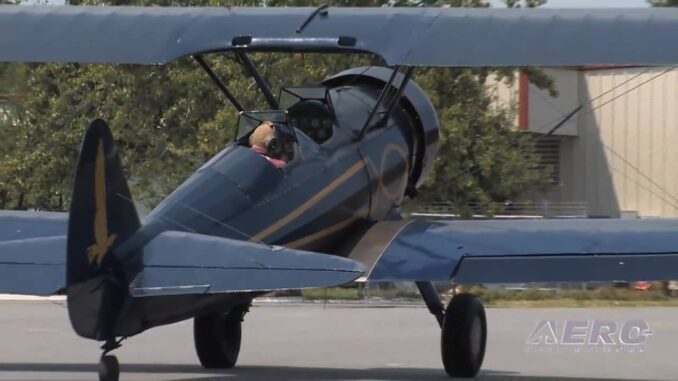
Biplane Fever Comes In Many Forms… But Stearman Fever May Be The Best Of Them All!
There is something about a biplane… especially when that biplane happens to be a Stearman… one of the most iconic bi-wingers to take flight since this whole shebang got going on Kill Devil Hill. ANN happened upon an old friend, Steve McDonald, at a recent aero-social gathering at the St. Augustine Airport (KSGJ) and coerced him (OK… no actual coercion was involved… to get an aero-opinion out of Steve, you ask a simple question and stand back!) to opine about his love affair and long-term ownership of a real live Boeing Stearman.
While most folks know the Boeing Model 75 by the common name of “Stearman,” it has worn a number of hats and been called a lot of names… (and a few of those weren’t nice ones, if you learned to fly taildraggers in this bird). The US Army Air Corps designation for the A75N1 is “PT-17,” the Navy designation is “N2S,” and the Canadian military designation is “Kaydet.” The Stearman was originally designed to serve as a trainer, and many a WWII flyer got their start in the open cockpit of this amazing aircraft. After the war, a number of Stearmans found their way into civilian use as barnstormers and crop dusters.
Boeing notes that the two-seater biplane was introduced by the Stearman Aircraft Division of Boeing in Wichita, KS., in 1934 and conducted it first flight on November 26th of that year. The A75 has fabric-covered wooden wings, single-leg landing gear and an over-built welded-steel fuselage. Only radial engines were used. Between 1936 and 1944, Boeing built 8,584 of them, in all versions, plus the equivalent of 2,000 more in spares. In addition to sales to the Navy and the Army Air Corps, the trainers were sold to Canada, China, the Philippines, Venezuela, Argentina and Brazil for both military and civilian uses.
The A75 (according to Janes, though different sources spec the bird in subtly different ways), has a wing span of 32 feet, 2 inches, a length of Length: 24 feet, 10 inches and its stock Continental R-670 radial engine pulls 220 hp (though Steve’s bird boasts additional ‘OOMPH’ via a larger engine). The Stearman has an average empty weight of 1,936 lbs, a gross weight of 2,717 lbs, a range of 505 miles and a top speed of 124 mph. The Stearman cruises at a whopping 106 mph and has a service ceiling of 11,200 feet. Firebreathing, they weren’t, but the bird has fun written all over it and the hundreds still in civilian hands are ample testimony of the birds great flying characteristics.
Steve knows a thing or two about these birds… having built his to a championship standing some years ago and has been flying it ever since. And there’s NO denying he loves the breed… Join Aero-TV as we let Steve bend our ears about a subject he’s more than qualified to opine about… the iconic Stearman.
